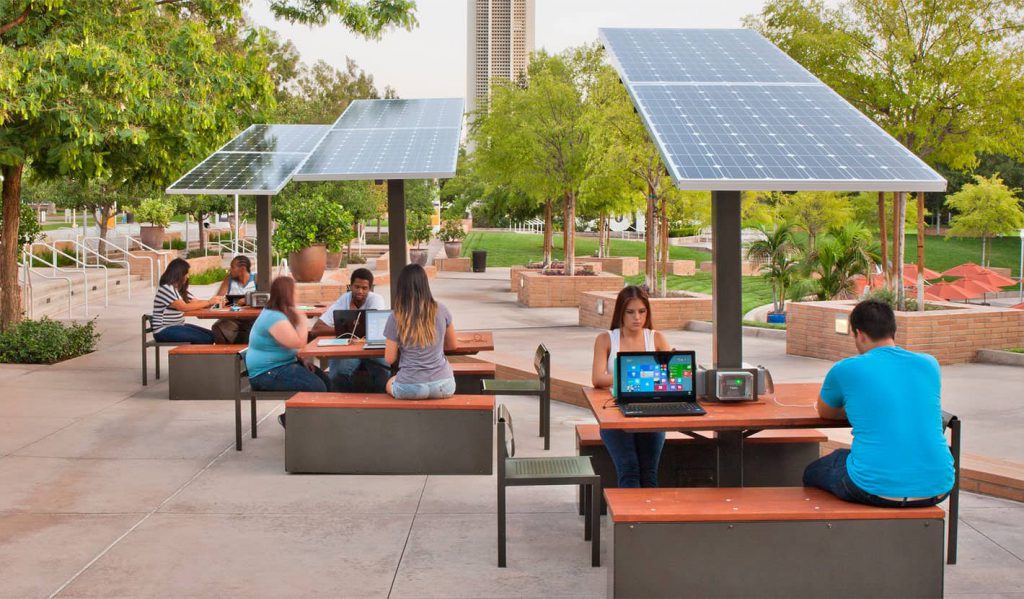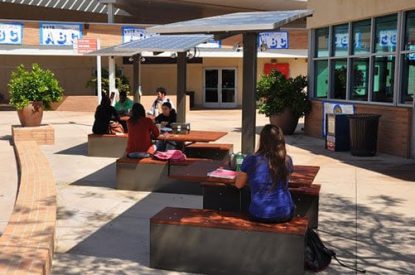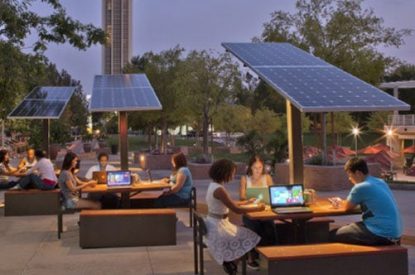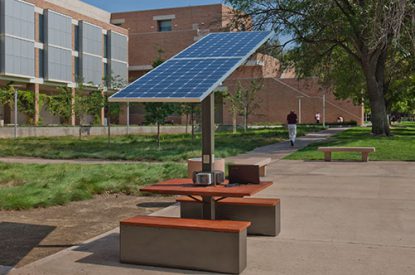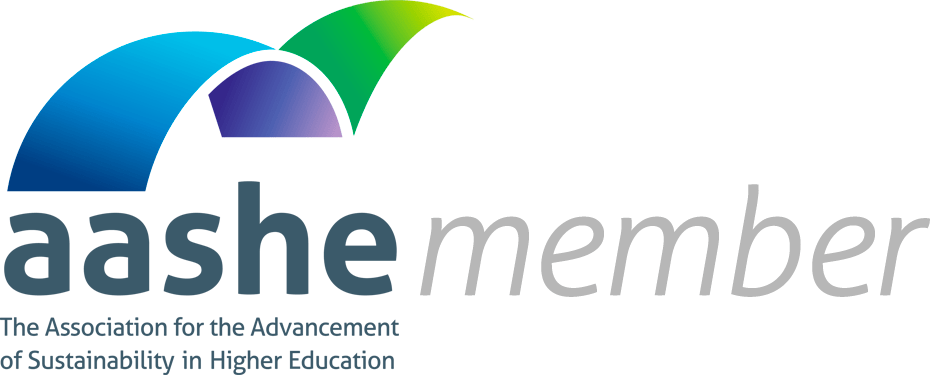When President Janet Napolitano initiated a mandate that the University of California, Riverside, would be carbon neutral by 2025, the students at the University took this obligation to heart. Wireless networks had permeated the campus. Students and campus visitors had become more reliant on laptops and mobile devices. Laptops were available for students to loan at their student union building, however, there were a limited number of places to use these devices because of their charging needs. Finding outlets outside for charging became necessary, but remained difficult and limited.
As a green minded campus, UCR was also undertaking many sustainability projects. Unfortunately, none provided the desired visibility to bring awareness of renewable energy use on campus. The pervasive use of technology and a desire to use “green” energy led students to seek solutions that would meet the president’s directive.
Students and management identified CarrierClass Green Infrastructure and Sunbolt solar workstations as a reliable means to address these challenges. “The solar tables at UCR provide a clean and renewable source of energy for charging the multitude of mobile devices on campus while offering much needed shade,” said John Cook, Director of Sustainability at UCR. “The solar tables get us one step closer to meeting our 2025 carbon neutrality goals.”
Not only did the tables provide access to green energy, but they also enhanced areas on campus that were underutilized. They essentially reprogrammed spaces to be more inviting and attractive. As an added bonus, once tables were installed at the community R-Garden, UCR began to run movie nights every Thursday. They used the tables as a source of power where none existed before.
The table became a piece of infrastructure on campus that grew into a social gathering point for students and even inspired an entirely new program for the university.
Budgets from various departments including the Highlander Union Building administration, the Student Technology Fund, and the Green Campus Action Plan (GCAP) were combined to purchase the tables for the campus.
CEO, Jim Innes of CarrierClass Green Infrastructure reflects, “We were happy to contribute to meeting the goals of the university to reduce their carbon footprint and provide our premium product for this endeavor. We look forward to continuing to work with the university team in providing additional tables in the future.”
“These units meet a need by bringing electricity to areas where students congregate but where there is little or no infrastructure to support it. It also demonstrates a commitment towards green power and towards fulfilling the university’s goal of reducing carbon emissions,” said Uma Ramasubramanian, Senior Physical Planner in Capital Resource Management, who coordinated selection and placement of the tables.
“These units meet a need by bringing electricity to areas where students congregate but where there is little or no infrastructure to support it…”
– Uma Ramasubramanian

